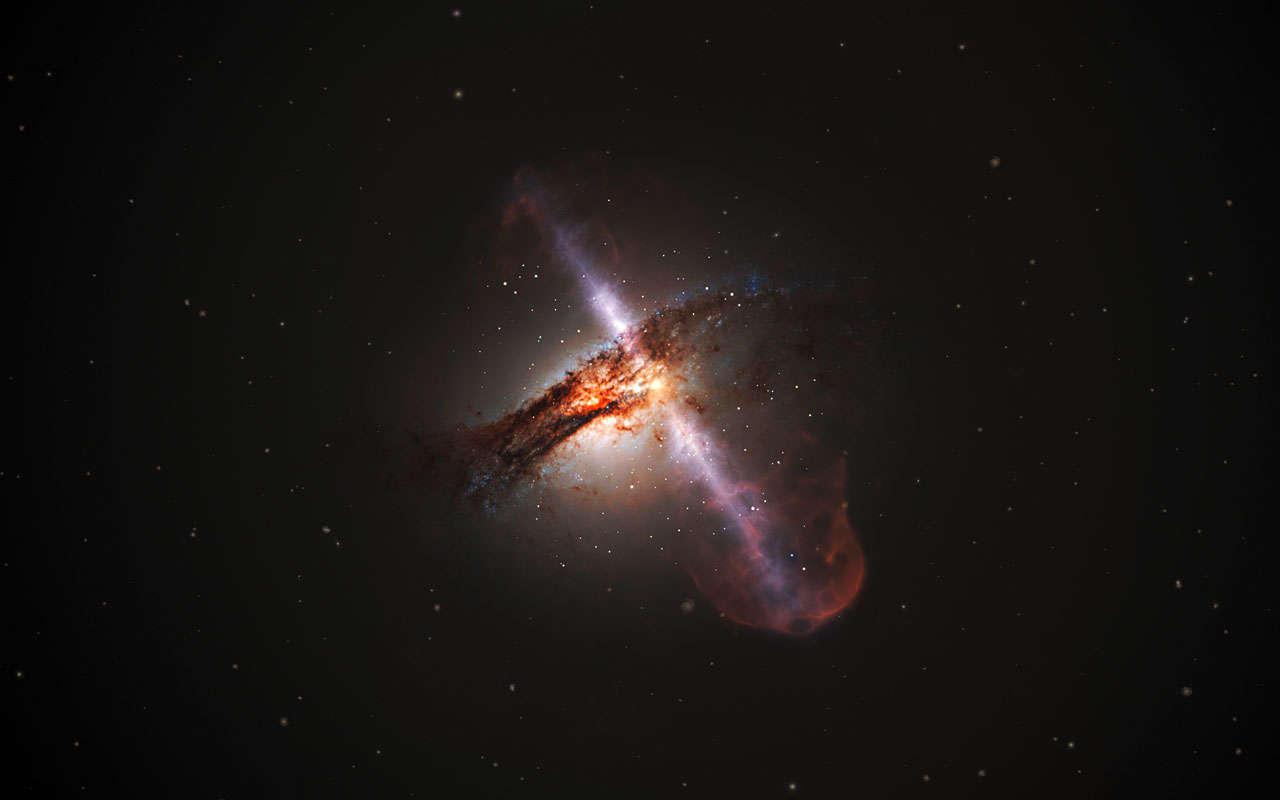Create a free profile to get unlimited access to exclusive videos, sweepstakes, and more!
You are what you eat when you’re a black hole

Supermassive black holes devour supermassive amounts of star stuff — and their eating habits can now give away their enormity.
No one can actually see inside the mouth of a black hole. Anything passes the event horizon, will be pulled into the gaping maw of the singularity by intense gravity, never to be seen again. What we can see are their accretion discs that glow with the light of photons and dismembered stars. There is an erratic flickering in a black hole’s accretion disc as it shoves food in its face.
University of Illinois Urbana-Champaign researchers Yue Shen and Colin Burke, who led a study recently published in Science, have found that the size of black holes is connected to light flickering from their accretion discs as they feed. It tends to continue for long stretches of time in supermassive black holes.
This behavior has also been seen in the accretion discs of white dwarfs, and though they flicker on smaller timescales, this was the similarity that told Shen he was onto something.
“Once we saw that there is a correlation extending from supermassive black holes to white dwarfs, we knew that this must be something fundamental to accretion discs,” he told SYFY WIRE. “We then realized that this variability-mass relation can be understood if the variability is driven by thermal fluctuations in the accretion disc.”
While white dwarfs would seem like the last objects in the universe to have accretion discs, they can obtain one, either by passing through an interstellar region dense with matter (such as a molecular cloud) or from another star if that white dwarf is in binary system. Gravitational potential from each star in a binary system is supposed to be the same at certain points. If one star gains enough matter to make it larger than the space between those points, then can pull matter from the other into an accretion disc. As the star spins faster, the disc flattens.
To study how flickering varies between black holes and compares to white dwarfs, Shen and his research team searched through data of supermassive black holes that are actively feeding, since those that are are resting, or quiescent, emit hardly any light. They found that supermassive black holes are strongly associated with a particular timescale over which the flickering pattern changes. The phenomenon is similar in white dwarfs, except the timescale isn’t nearly as long and the fluctuations not as high because of the extreme mass difference.
No one knows exactly causes such random fluctuations in light, but something in what black holes eat might be behind this.
“The nature of the driving mechanisms of the accretion disk variability is still unclear, but there are some usual suspects,” Shen said. “Turbulence in magnetized plasma could play a crucial role in generating these fluctuations, which manifest themselves as luminosity fluctuations from the accretion disk.”
There is still a way that astronomers can measure the flickering that occurs as a black hole feeds. How much the pattern (whatever semblance of a pattern there is) can go from changing over less time to more time, though any chance in the pattern will happen over a longer stretch of time. The findings have implications beyond just supermassive black holes. Intermediate-mass black holes or IMBHs, which ware smaller but still around a hundred to a hundred thousand solar masses, can also be investigated by their flickering as it relates to their mass.
Some IMBHs may become monsters later on in their life, or undeath, considering they are probably collapsed stars. They are supposed to be everywhere but seem to be hiding. Out of all those expected to exist, few have actually been found. The thing is that they do flicker. Now that the connection between between flickering and mass, more of those which have been theorized to exist somewhere might finally emerge from the dark. Shen looks forward to using observations of accretion disc flicker signals to test theories that go even deeper.
“The next step in our line of work is to make more detailed comparisons between observations and theoretical predictions and see if these models are correctly producing the right variability amplitudes, timescales, and correlations with accretion parameters such as the black hole mass,” he said.
Maybe “you are what you eat” is overused, but at least for black holes, science backs it up.


























